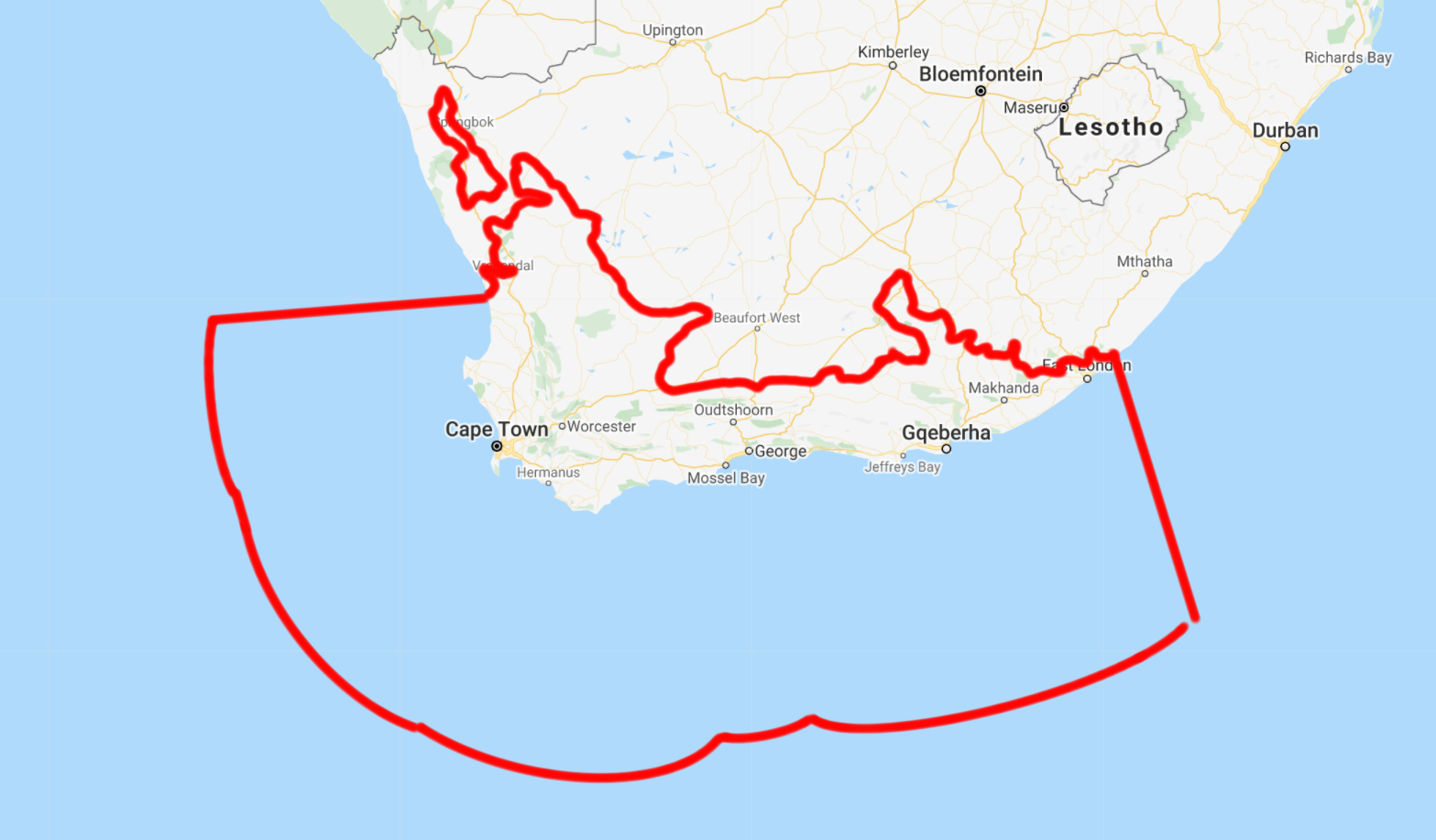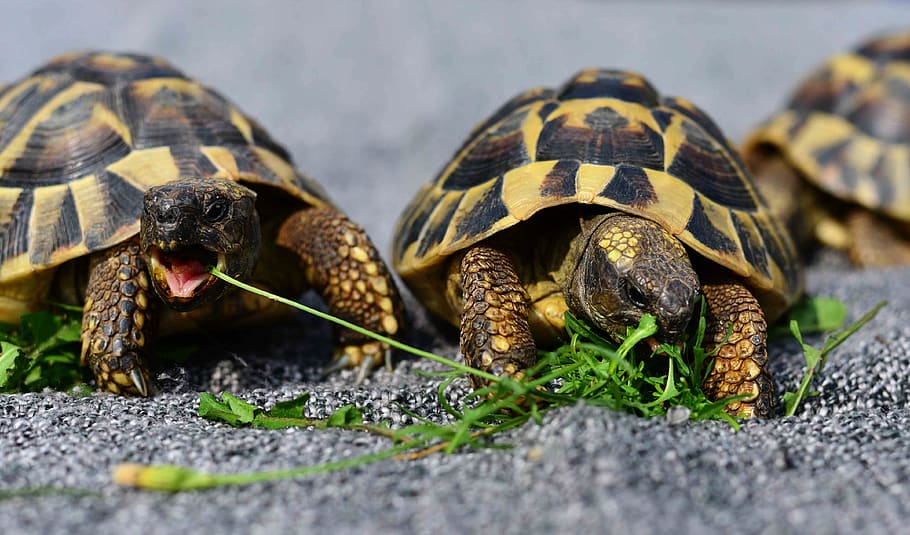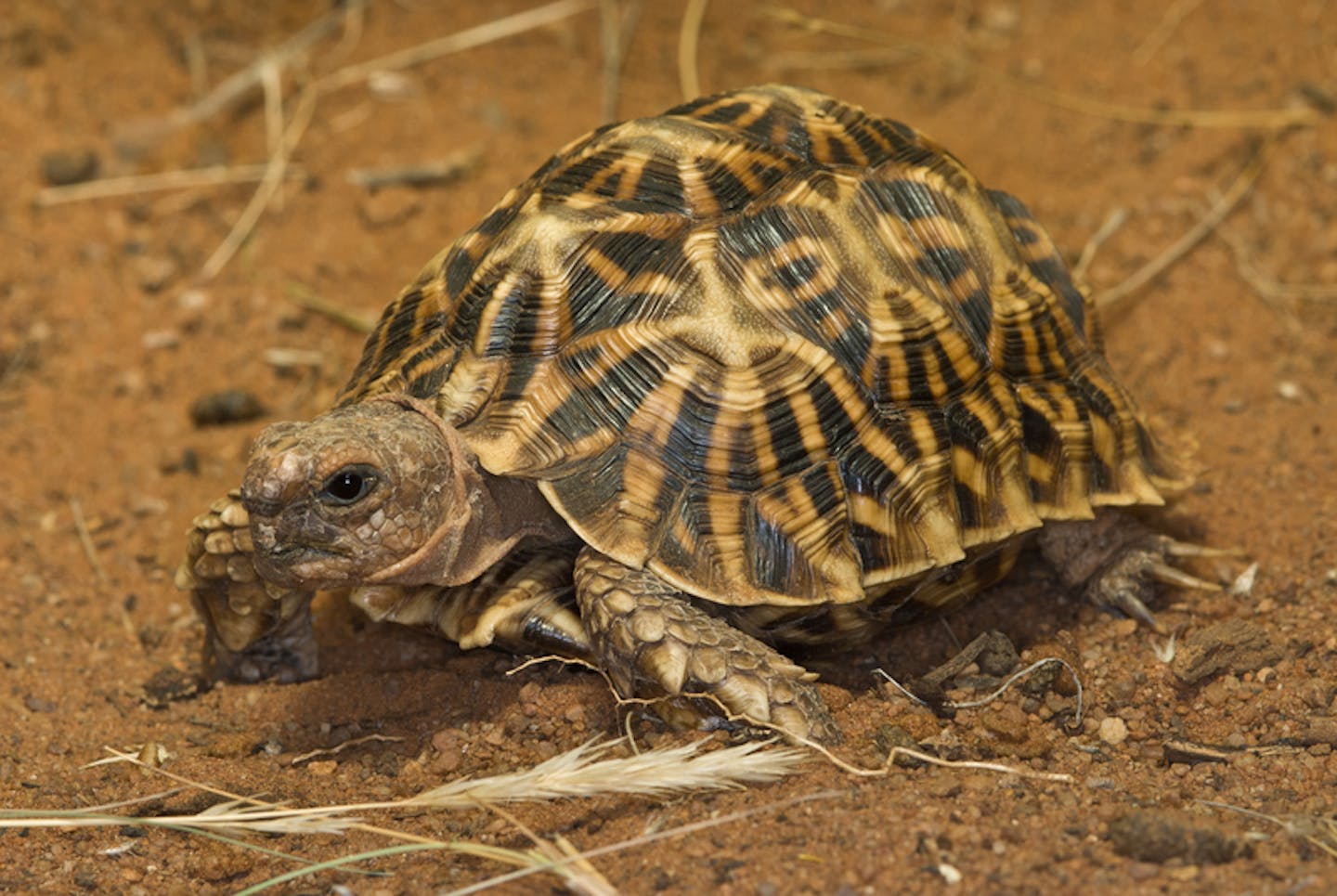The remarkable patterns of the geometric tortoise defend against danger
One Earth's “Species of the Week” series highlights the flagship species of each of the 844 unique ecoregions contained within Earth’s bioregions.
At the southernmost tip of the African continent lies one of the most biologically diverse regions on earth. Rich shrubland is supported by a distinct Mediterranean-like climate where summers are dry and warm, and winters are and mild and wet. Scaly, yellow, and black pleated feet, slowly scrape across the sandy dirt below the vast canopy of short bushes.
The geometric tortoise is only found in this landscape and helps spread the seeds of the indigenous fynbos, flowers, and grass species that grow here. However, both this tortoise and its habitat are threatened as the South-Western Cape of South Africa further develops without regard to the tender ecosystem currently living there.

Geometric tortoises are the flagship species of the Fynbos Shrubland ecoregion, located in the South African Cape Shrublands & Mountain Forests bioregion (AT2).
From a birds-eye view, the geometric tortoise’s shell has perfectly patterned black and yellow shapes that give it its name. These spirals, stars, and circles are domed across its carapace in a rounded, yet dagger-like formation that is used for defense against predators.
Fully grown, geometric tortoises reach only five to six inches in length with females being the larger sex.
Sexual maturity is reached at approximately 10 years and females lay one or more clutches of about 1-5 eggs in spring to early summer in ground nests. Hatchlings appear after the first winter rains when the ground has softened, and fresh young annual plants have bloomed.

The geometric tortoise consumes at least 14 endemic plant species in its diet. As these leaves, buds, and shoots pass through the tortoise’s digestive tract, seeds are dispersed across the region. This helps create habitats for a variety of species throughout the tortoise’s ecosystem and replenishes its own food source.
A prime example of how the ebb and flow of nature is a delicate balancing act, this unique environment and the geometric tortoise depend on one another to flourish. Now, with nearly 95 percent of the lowland fynbos ecoregion lost to urban and agricultural expansion, the geometric tortoise is one of the rarest species of tortoise and most threatened reptiles on Earth.
Critically endangered, there are only about 2,000 to 3,000 geometric tortoises estimated to be alive today. Its historic range is now reduced to thirty-one habitat fragments but optimistically includes seven reserves.
As government-run preservation efforts are tied up in bureaucracy, much of the conservation action has been created by public support and privately run endeavors. Now more than ever, it is important to combine these efforts as food, cover, nesting, and the ability to move around in its habitat are four main biological factors vital to the survival of geometric tortoise.
Ecological connectivity is the approach many scientists and conservationists alike are promoting to merge all these projects, an idea which joins habitats together to create a free-flowing ecosystem.
Interested in learning more about the bioregions of the Afrotropics? Use One Earth's interactive Navigator to explore bioregions around the world.
Launch Bioregion Navigator

